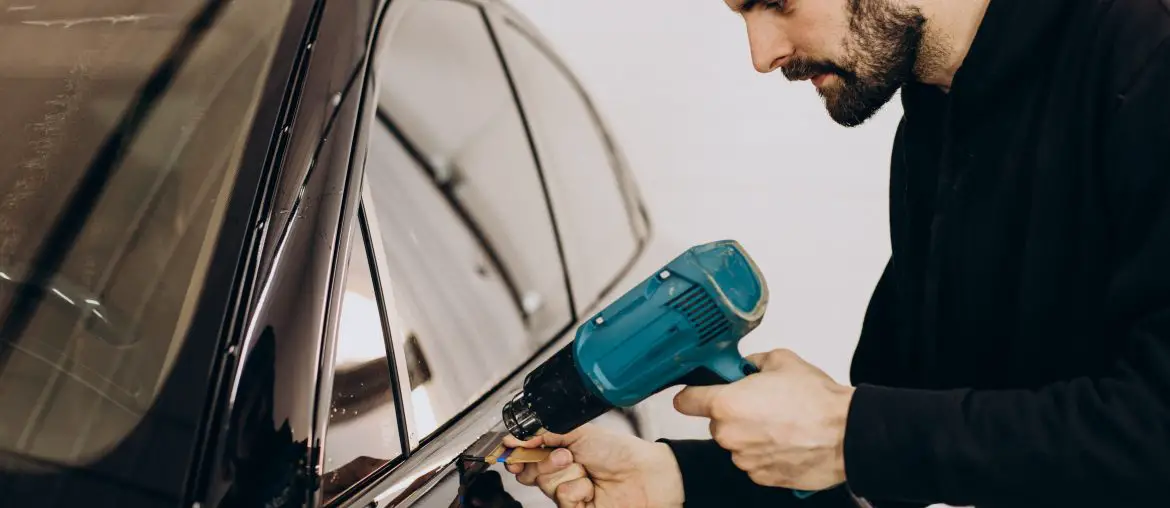The Connecticut tint laws for vehicles were enacted in 1994. This state has been the 24th state to enact these laws out of all 50 states in the United States. This has been compiled with the most important laws, rules and regulations. The legal statements have also been included for easy reference.

The darkness is measured in terms of the Visible Light Transmission factor, and the amount of darkness is higher when the VLT factor is low. The state of Connecticut has less strict laws related to window tints as they allow darkness up to 35%. However, it is necessary to follow these laws and avoid using darker shades than recommended by the state. This is to ensure the protection of both yourself and other parties.
These laws might be interpreted differently in certain counties or residences. Therefore, make sure to check the information with your local law enforcement authorities for better clarification.
Connecticut Tint Laws – Window Tint Darkness
Tint darkness for sedans:
- Windshield: Non-reflective tint is allowed above the manufacturer’s AS-1 line.
- Front Side windows: Must allow more than 35% of light in.
- Back Side windows: Must allow more than 35% of light in.
- Rear Window: Any darkness can be used.
Tint darkness for SUV and vans:
- Windshield: Non-reflective tint is allowed above the manufacturer’s AS-1 line.
- Front Side windows: Must allow more than 35% of light in.
- Back Side windows: Any darkness can be used.
- Rear Window: Any darkness can be used.
Connecticut Tint Laws – Window Tint Reflection
Tint reflection for sedans SUVs, and vans:
- Front Side windows: Must not be more than 21% reflective.
- Back Side windows: Must not be more than 27% reflective.
Other Rules and Regulations of Connecticut Window Tinting Laws
- Side Mirrors
According to the Connecticut window tinting laws, dual side mirrors are required if the back window of the vehicle is tinted.
- Restricted Colors
No special window tint colors are prohibited. Therefore, any window tint color can be used on the vehicles, as long as the darkness and reflectivity are within the legal limitations.
- Tint Variance
A light transmission tolerance of 3% will be allowed by the Connecticut window tinting laws. Refer to the Window Tinting Shades Chart for more details about the level of darkness.
- Certificates and Stickers
It is necessary for tint film manufacturers to certify the films before selling them in Connecticut. It is recommended to check this with your dealer to make sure that they are using certified film. There should be a sticker between the film and the glass on each tinted window to identify legal tinting.
Find the best window tint that is suitable for your requirements from Types of Window Tint.
- Medical Exceptions
Connecticut window tinting law allows medical exemptions for vehicle owners up to 20% VLT tint film. You can get this only if your medical condition needs a tint of darkness between 20% and 32%. It is mandatory to have the medical exemption certificate in your possession at all times you use the vehicle. Compliance stickers will not be attached to the windows of these vehicles.
To request a medical exemption, the main requirement is to fill out the Application Form
After being approved for medical exemption in Connecticut, the vehicle tint needs to be validated by the Commercial Vehicle Safety Division. For this, the tint measurement should be passed at Wethersfield or Hamden inspection lanes. Upon the inspection, if your vehicle has a tint with a VLT of less than 20%, then the medical exemption will not be awarded, and you will be referred to the Medical Review Unit.
How Much Is A Tint Ticket In Connecticut?
You will simply get a warning ticket if it’s the first time you violated the Connecticut window tinting law. If you get caught for the second time, you would definitely get a fine of $250 or more. Since this is a large amount of money, you would prefer to get your car windows tinted legally and avoid any trouble.
We recommend you try applying a new window tint with DIY methods by referring to How to Tint Car Windows. You can even remove your window tint yourself by going through How to Remove Window Tint.
The State of Connecticut Information
The state of Connecticut is located as the southernmost state of the New England region in the northeastern part of the United States. It is surrounded by Rhode Island on the east and Massachusetts in the north. New York lies to the west and south, where the boundary of Long Island Sound is shared.
The Connecticut River is a major U.S. river that flows in the middle of the state, almost bisecting it. This state is the third smallest in terms of land extension. It is also the 29th most populous state while being the 4th most densely populated state in the United States. The capital of Connecticut is Hartford. The population in this state is 3.6 million. The total area is 5,543 square miles (14,357 square kilometers).
Keep in mind that Connecticut Tint Laws can change daily and may be interpreted differently in your city or county. To be sure, we recommend double-checking our information with your local DMV or Law Enforcement Authorities. Furthermore, please let us know if there are any changes to make.







